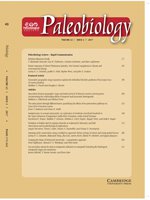Throughout the late Quaternary, the Sahul (Pleistocene Australia—New Guinea) vertebrate fauna was dominated by a diversity of large mammals, birds, and reptiles, commonly referred to as megafauna. Since ca. 450–400Ka, approximately 88 species disappeared in Sahul, including kangaroos exceeding 200 kg in size, wombat-like animals the size of hippopotamuses, flightless birds, and giant monitor lizards that were likely venomous. Ongoing debates over the primary cause of these extinctions have typically favored climate change or human activities. Improving our understanding of the population biology of extinct megafauna as more refined paleoenvironmental data sets become available will assist in identifying their potential vulnerabilities. Here, we apply a multiproxy approach to analyze fossil teeth from deposits dated to the middle and late Pleistocene at Cuddie Springs in southeastern Australia, assessing relative aridity via oxygen isotopes as well as vegetation andmegafaunal diets using both carbon isotopes and dental microwear texture analyses. We report that the Cuddie Springs middle Pleistocene fauna was largely dominated by browsers, including consumers of C4 shrubs, but that by late Pleistocene times the C4 dietary component was markedly reduced. Our results suggest dietary restriction in more arid conditions. These dietary shifts are consistent with other independently derived isotopic data from eggshells and wombat teeth that also suggest a reduction in C4 vegetation after ∼45 Ka in southeastern Australia, coincident with increasing aridification through the middle to late Pleistocene. Understanding the ecology of extinct species is important in clarifying the primary drivers of faunal extinction in Sahul. The results presented here highlight the potential impacts of aridification on marsupial megafauna. The trend to increasingly arid conditions through the middle to late Pleistocene (as identified in other paleoenvironmental records and now also observed, in part, in the Cuddie Springs sequence) may have stressed the most vulnerable animals, perhaps accelerating the decline of late Pleistocene megafauna in Australia.
How to translate text using browser tools
26 January 2017
Dietary responses of Sahul (Pleistocene Australia-New Guinea) megafauna to climate and environmental change
Larisa R. G. DeSantis,
Judith H. Field,
Stephen Wroe,
John R. Dodson





